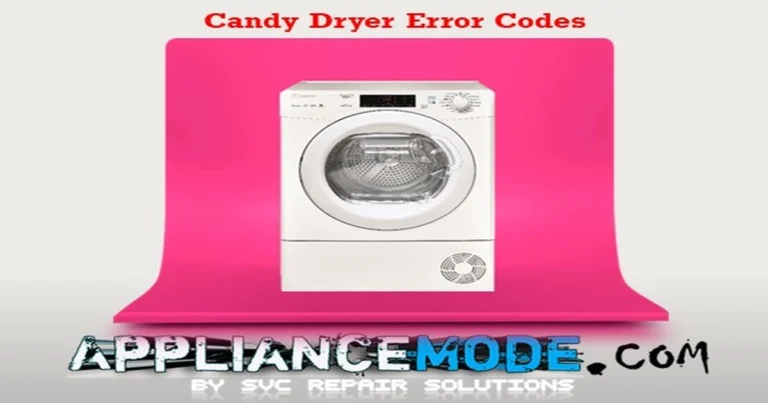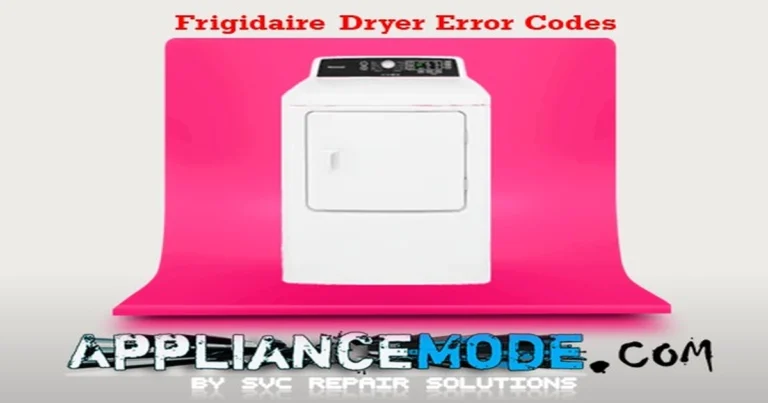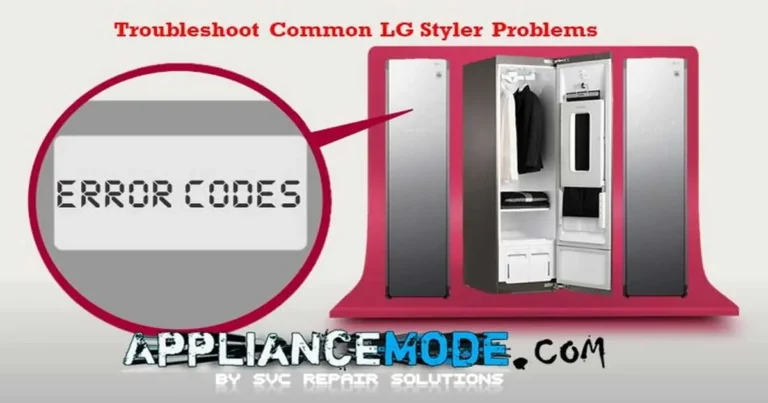Troubleshooting Your Hoover Dryer: A Guide to Understanding Error Codes
Hoover dryer error codes can be a cryptic language when your appliance acts up. These codes, however, are invaluable tools for both homeowners and repair technicians, offering clues about what might be wrong. Understanding what these symbols mean can help you identify simple issues you might be able to fix yourself or provide essential information when calling for professional help.
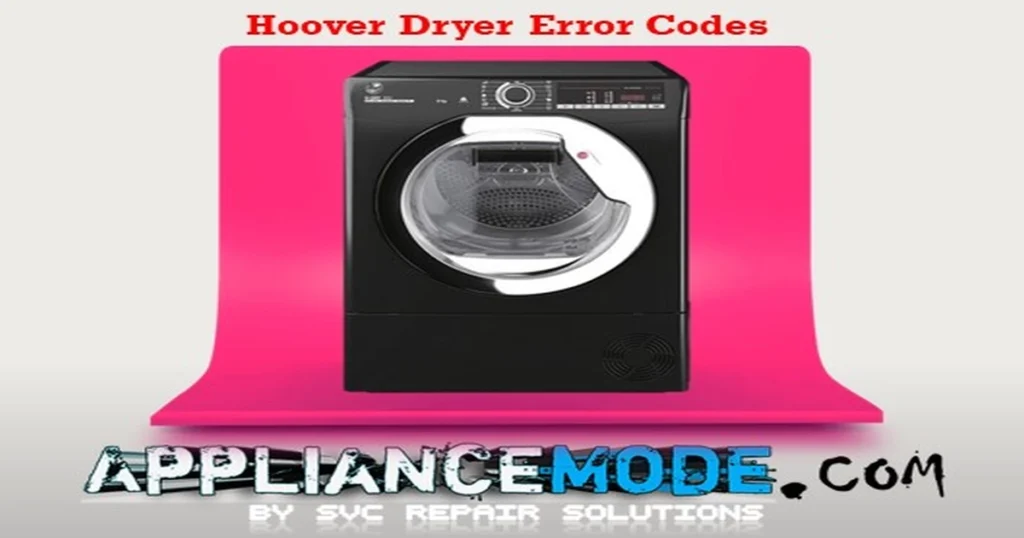
Before attempting any troubleshooting or repairs, always unplug your dryer from the power outlet to ensure your safety.
Common Hoover Dryer Error Codes Explained
Here is a guide to common error codes that may appear on a Hoover dryer display, their potential meanings, and possible solutions:
E3: Water Tank Error
Meaning: This code typically indicates that the water condenser tank is full and needs to be emptied. It can also be triggered by a problem with the sensor that detects the water level.
Solutions:
- Check the water collection tank and empty it if it’s full.
- Ensure the water tank is correctly inserted after emptying.
- Inspect the area around the water level switch for lint or debris that might be obstructing its function. Clean if necessary.
- If the issue persists after emptying and cleaning, the water level switch or its wiring may be faulty and require inspection with a multimeter or replacement.
E05: Front Sensor Error
Meaning: The E05 error code usually points to a problem with the front NTC (Negative Temperature Coefficient) sensor, which is used to monitor temperature. This could be due to a short circuit or an open circuit in the sensor or its wiring.
Solutions:
- Check that the wire connector for the front NTC sensor is securely plugged in.
- If comfortable using a multimeter, you can test the resistance of the front sensor. A typical value at 25°C is around 19.8 KΩ. Significant deviations may indicate a faulty sensor.
- Inspect the wiring harness connected to the sensor and the main control board for any visible damage.
- If the sensor and wiring appear intact, the issue might lie with the main control board, which may need to be checked or replaced by a qualified technician.
E06: EEPROM Error
Meaning: This error code generally indicates an issue with the dryer’s EEPROM (Electrically Erasable Programmable Read-Only Memory). This memory chip on the main control board stores program settings and data, and a fault here suggests a problem with the main board itself.
Solutions:
- Often, the solution for an E06 error is the replacement of the main control board. This is typically a job for a qualified appliance technician.
E07: Clogged Filter Error
Meaning: The E07 code often signifies that the lint filter is clogged. Excessive lint buildup restricts airflow, preventing the dryer from operating efficiently and potentially causing overheating. Note: Some sources suggest E07 can relate to door lock or motor issues on some models, so consulting your manual is advised.
Solutions:
- Thoroughly clean the lint filter. This should be done after every drying cycle.
- Ensure the filter is correctly seated back in its housing.
- Check the filter housing and the air ducts immediately around it for any stubborn lint blockages.
E08: Heater Fuse Protection Error
Meaning: This code suggests a problem within the heating circuit, potentially related to a tripped thermal fuse or thermostat, or an issue with the heating element itself. Poor ventilation can often contribute to this error. Note: Some sources indicate E08 can relate to a motor speed sensor issue on certain models.
Solutions:
- Check the wire harness connections to the heating element, thermostats, and thermal fuses.
- If you have a multimeter, you can test the resistance of the thermal fuses and thermostats in the heating circuit. Typical resistance values when cool should be very low (close to 0 Ω). tripped thermal fuse will show infinite resistance.
- Test the resistance of the heating element. A typical resistance for a 2100-watt, 220-volt heater is around 23 Ω (R=V2/P).
- Crucially, ensure the ventilation ductwork from the dryer to the outside is clean and free of obstructions. Blocked vents are a common cause of overheating and can trip thermal safety devices.
- Check the dryer’s internal air circulation paths for lint buildup.
- If other components test correctly, the main control board may need to be checked or replaced.
E9: High-Limit Thermostat Error
Meaning: This error indicates that a high-limit thermostat has tripped, usually due to the dryer overheating. This is a safety mechanism to prevent fires.
Solutions:
- Allow the appliance to cool down completely for at least 40 minutes.
- Some high-limit thermostats are manually resettable. Locate the thermostat (often on the heating element housing) and look for a small button to push. If it doesn’t reset or trips again quickly, the thermostat may be faulty and need replacement.
- Test the resistance of the high-limit thermostat with a multimeter. When cool and not tripped, it should show very low resistance (around 0.1 – 2.1 Ω).
- Investigate the cause of the overheating. This could be a clogged lint filter, blocked ventilation, or a faulty cycling thermostat that is not regulating the temperature correctly.
- Check the heating element to ensure it’s not shorted or drawing excessive power.
E10: Communication Failure
Meaning: This code signifies a loss of communication between the main control board and the user interface module (the control panel on the front of the dryer).
Solutions:
- Check that the ribbon cable or wire harness connecting the main control board and the user interface module is properly seated and not damaged.
- If the connection is secure, either the user interface module or the main control board may be faulty and require replacement.
E11: Rear Temperature Too High
Meaning: This error suggests that the temperature at the rear sensor is excessively high, indicating a problem with airflow or cooling within the dryer. Note: On some washer-dryer models, E11 can relate to the dryer heater or sensor.
Solutions:
- Thoroughly clean all ventilation ducts, both internal and external, to ensure unrestricted airflow.
- If your dryer is a condenser model, clean the condenser unit according to the manufacturer’s instructions.
- Check the drive belt to ensure it’s intact and not slipping, as this can affect the rotation of the drum and fan.
- Inspect the dryer’s fan blade for any obstructions or damage that would prevent it from moving air efficiently.
- Check the motor capacitor and the motor itself for proper operation.
E12: Pressure Switch Error
Meaning: This error typically indicates a problem with the pressure switch, which is often used in condenser dryers to sense the water level in the collection system.
Solutions:
- Check the wire harness connector to the pressure switch for a secure connection.
- Inspect the pressure switch itself for any visible damage.
- Ensure that the air trap connected to the pressure switch is clean and not blocked with lint or debris.
- If the switch appears faulty after inspection, it may need to be replaced.
E13: Compressor Sensor Error
Meaning: This code points to a fault with the compressor NTC sensor, which monitors the temperature of the compressor in heat pump dryer models.
Solutions:
- Check the wire harness connector for the compressor NTC sensor.
- Test the resistance of the compressor NTC sensor with a multimeter. A typical value at 25°C is around 20 KΩ.
- Inspect the wiring leading to the sensor and the main board.
- If the sensor and wiring are intact, the main control board may be the source of the problem.
E14: Rear Sensor Error
Meaning: Similar to E05, E14 usually signifies a problem with the rear NTC temperature sensor, indicating an open circuit or cut in the sensor or its wiring. This sensor helps monitor airflow temperature at the rear of the drum.
Solutions:
- Check the wire harness connector for the rear NTC sensor.
- Test the resistance of the rear sensor with a multimeter. A typical value at 25°C is around 19.8 KΩ.
- Inspect the wiring connected to the sensor and the main control board.
- If the sensor and wiring appear fine, the issue might be with the main control board.
E15: EEPROM Empty Error
Meaning: This error, similar to E06, suggests a problem with the main control board’s EEPROM, specifically that it may be empty or corrupted.
Solutions:
- Replacing the main control board is typically required to resolve an E15 error.
E21: Heater Relay Error
Meaning: This code indicates a potential issue with the heater relay on the main control board, which controls power to the heating element. It can also be triggered by problems in the heating circuit itself. Note: Some sources link E21 to excess water or a blocked drain pump in condenser dryers.
Solutions:
- Check the wire harness connections within the heating circuit.
- Ensure the high-limit thermostat has not tripped (and reset it if necessary).
- Test the thermal fuse for continuity.
- Verify that the ventilation ducts and internal air circulation paths are clean and not blocked.
- Check the main control board for visible signs of damage around the heater relay. Replacement of the main board may be necessary.
E22: Compressor Relay Error
Meaning: This error suggests a fault with the compressor relay on the main control board in heat pump dryer models. Note: Some sources indicate E22 can relate to a blocked or defective drain pump.
Solutions:
- Check the wire harness connections related to the compressor circuit.
- Inspect the compressor fan motor and compressor capacitor if applicable.
- Check the compressor itself for proper operation.
- If other components seem functional, the main control board’s compressor relay may be faulty, requiring board replacement.
LOC: Key Lock Notification
Meaning: The “LOC” display is not an error code indicating a malfunction but rather a notification that the control lock function is activated. This feature prevents accidental changes to the dryer settings.
Solutions:
- To deactivate the control lock, press and hold the designated buttons (often labeled “Time selection” and “Drying selection” or similar) simultaneously for a few seconds. The display should show “Unl” or similar to confirm deactivation.
- To activate the control lock, press and hold the same buttons again for a few seconds until “LOC” appears.
- Always consult your specific Hoover dryer’s user manual for the exact buttons and procedure for activating and deactivating the control lock, as this can vary between models.
Understanding these common Hoover dryer error codes can empower you to address minor issues and provide valuable information to a professional when more complex problems arise, helping to get your dryer back up and running efficiently.
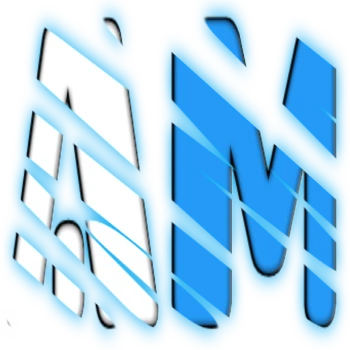
I am a master Appliance Repair technician with over 35 years of experience in the field. I am passionate about helping people troubleshoot their appliances and fix common problems. My website, appliancemode.com, provides a wealth of information on troubleshooting common appliance issues and deciphering error codes. This website aims to empower people to tackle appliance repairs themselves and save money on service calls.

